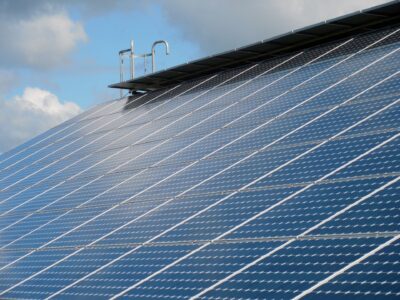How Does Solar Power Work?
The idea to create power from sunshine is not a new one, but scientists are learning how to harness energy from the Sun more efficiently and economically. Solar energy is a tremendous renewable energy source that is clean and abundant, and will undoubtedly make up a considerable portion of all industrialized nations’ energy production in the future.
How do you get from sunlight to electricity?
There are many different ways to collect and convert solar energy, but the most prominent and easiest to deploy uses photovoltaic (or PV) cells. These cells rely on the photovoltaic effect to convert light energy from the Sun into direct current (DC) electricity. From there, an inverter converts DC electricity into alternating current (AC) electricity. From the inverter, the AC electricity travels to an electrical panel for direct, residential and commercial use. Large, utility-scale PV systems connect directly to the power grid to provide power to all utility customers.

Some solar arrays have batteries or other energy storage systems that collect excess solar energy throughout the day; this stored power is then available for use at night, even after the Sun has set. Energy storage systems are an area of ongoing research. Currently, it is not uncommon to see solar power systems and other intermittent renewable power sources backed up by non-renewable sources. Even in these instances, battery energy storage systems are often used to provide voltage and frequency regulation, and to provide short-term, immediately responsive energy backup.
What are the benefits of a solar power system?
Solar power systems offer several very good benefits when compared to other power generation sources.
- Solar energy allows homes and businesses to save money on their utility bill by providing “free” energy.
- PV solar systems does not produce any pollution during power generation.
- On a cost per kilowatt-hour basis, new installations of solar power (in areas of abundant sunshine) have become economically competitive with natural gas power plants, even without government subsidies.
- Unused energy can be stored in batteries for later use.
- Solar panels installed on a home can increase its value.
How does a solar power system create savings on utility costs?
In residential and commercial installations, when more power is generated than is consumed, excess energy it is pumped back on to the grid and registered by the utility meter. The excess energy is credited to you and can be used to offset power that is used at night or on cloudy days. Time of use metering allows the user to “sell” their power during the day when it costs more. This amount is usually more than the cost of buying the electricity at night, therefore offsetting the costs and lowering utility costs. However, this practice is quickly being fought by utility companies, who are now buying power back from consumers at reduced rates. This recent trend is making energy storage systems ever more important.
Solar energy is Earth’s greatest energy source. By harnessing the power of the Sun you can save money on utility bills and still have electricity to keep your home or business running. Large solar arrays also realize substantial economies of scale, making them particularly attractive for utility-scale applications. The future of solar energy will rely on how solar energy is harnessed and stored. Future advances in solar power will likely feature efficiency improvements, substantial cost reductions, and major developments in energy storage systems. Storage solutions that present clean, simple and affordable options to both manufacturers and consumers will likely be the norm in viable solar power systems of the future.
 " alt="">
" alt="">